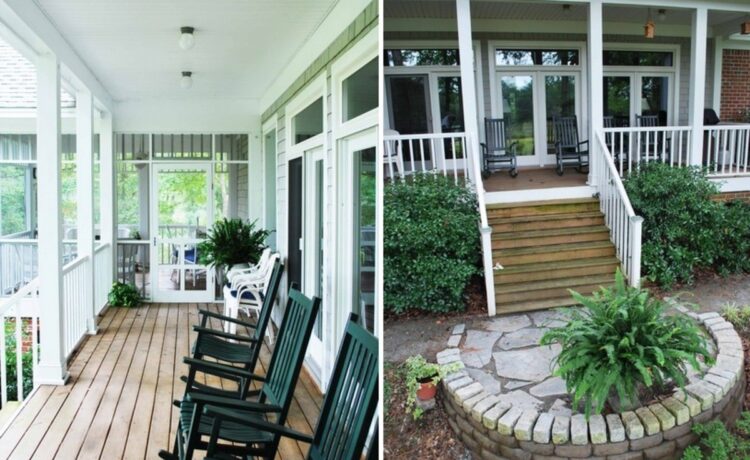Architecture and home design language may be as complex and delicate as the structures. Conversations commonly include “veranda” and “balcony”. They both contribute to a building’s appearance and functionality, yet they vary in ways that set them apart. Let’s examine architectural attractiveness and compare these two lovely outdoor spaces. So we will talk about verandas vs balconies.
Understanding the Architecture of Veranda
So what’s the difference between a veranda and a balcony? Porches evoke colonial and vast farm opulence. Verandas, derived from the Portuguese term “varanda,” meaning a covered platform atop a home, have a fascinating history spanning centuries. Verandas are huge, covered platforms that extend down the side of a home, typically at ground level or slightly higher.
Key Features of Verandas
Structure with a Roof
A porch’s roof protects people from the elements and allows them enjoy the outdoors. Columns or supports may support this roof, making the structure more fascinating.
Expansive Space
Verandas are spacious enough for dining, lounging, and gathering. Their size makes them ideal for outdoor gatherings and relaxation.
Integration with the Environment
Verandas unite interior and outdoor living spaces. These tranquil spots let visitors experience nature’s sights and sounds.
Looking Around the Balcony
The balconies, aon the other hand provide height and verticality to a house’s front, whereas a porch is more substantial. Because of the Italian term “balcone,” which means “scaffold” or “platform,” balconies have been added to buildings for thousands of years to give people a feeling of height and a perspective.
Important Balcony Facts:
Elevated Position
Balconies are elevated platforms on top levels of buildings that provide a greater view. Balconies provide a unique perspective for watching and contemplating, whether they overlook the city or a lovely environment.
Little Size
Balconies are ideal for small gatherings or quiet reflection than verandas, which are generally big. They fit well in small city dwellings since they’re compact.
Among balconies and verandas, balconies provide visual flair to a building’s exterior. Decks with balconies give character and appeal to a building. They may have intricate fences, vibrant patterns, or flowing vegetation.
Bridging the Divide
Although verandas and porches are distinct, they both mix indoor and outdoor spaces and boost quality of life. Outdoor areas are ideal for unwinding and connecting with nature. You may see the stars from a balcony or enjoy a patio breeze.
Being Adaptable and Flexible
Verandas and porches are versatile and adaptable to many architectural types and cultures. These outdoor spaces have evolved from Mediterranean homes with vine-covered verandas to contemporary high-rise apartments with streamlined porches.
Harmonizing Form and Function
So, according to Bay Area Cable Railing, verandas and porches are the ideal blend of charm and utility. Whether they’re extensions of houses, places for socializing, or peaceful reflection, these outdoor spaces are stunning pieces of architecture that improve people’s lives.
Conclusion
In the mix of architecture, verandas and porches represent the ideal outside living. Each has its unique charm, but they all aim to create locations where visitors can appreciate nature, have fun, and create lasting memories. Let us celebrate verandas and balconies as part of architecture and as permanent symbols of human inventiveness and ingenuity as we recognize the rich patchwork of architectural history and new ideas.














